A Journey To The Roof of The World With Changpa tribe
Changpa is a semi-nomadic Tibetan people resident of Changtang. Changtang is one of the most remote places on Earth, disconnected and unfriendly plateau, the main source of water is the winter snowfall on the mountains, with a very cold desert where temperatures will drop to -40°C with high-altitude plateau 14,846ft above sea level located in the west of the Tibetan plateau. In the winter for 9month the area can’t be accessed because of heavy snow and will cut them off from the rest of the world. Changpa tribe relies on their animals for livelihood, nourishment, and survival, for centuries they raised Changthama, a special breed of sheep that produce the soft, luxurious and finest Cashmere in the world. For Changpa tribe a very challenging life with harsh environmental conditions has taught them how to survive and flourish in this condition.
C H A N G T A N G
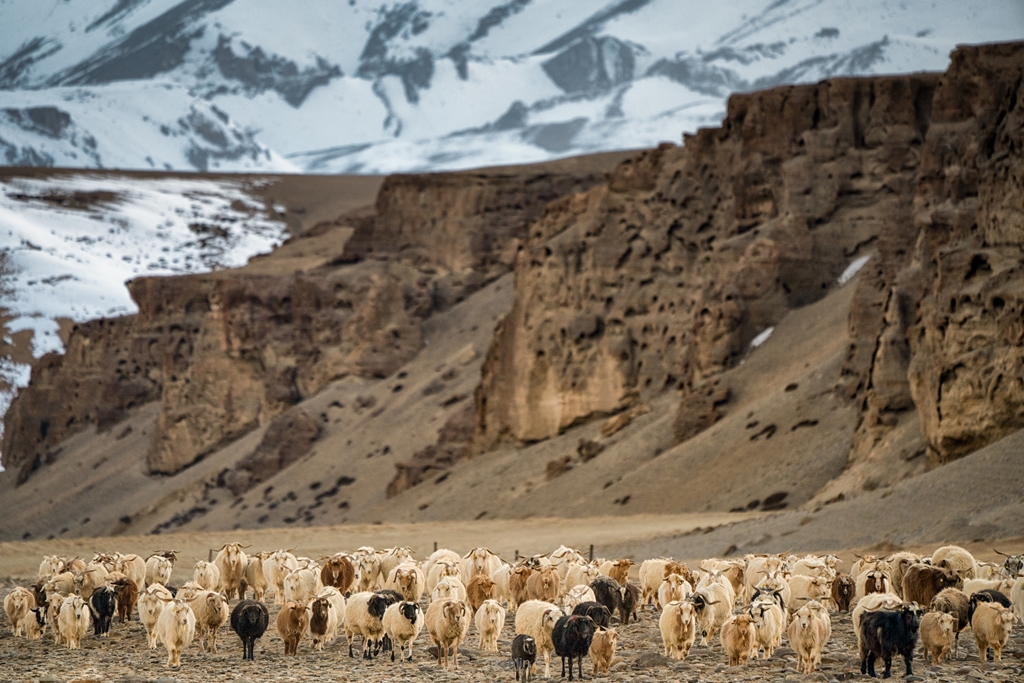
Changtang is one of the most remote places on Earth, disconnected and unfriendly plateau.
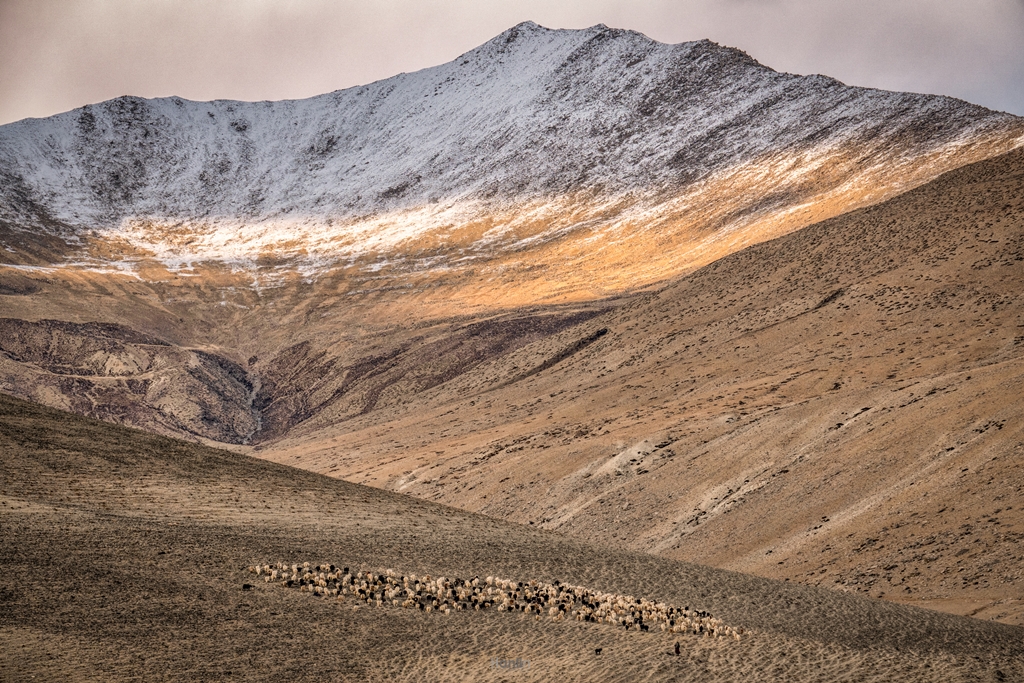
The main source of water is the winter snowfall on the mountains, with a very cold desert where temperatures will drop to -40°C with high-altitude plateau 14,846ft above sea level located in the west of the Tibetan plateau.
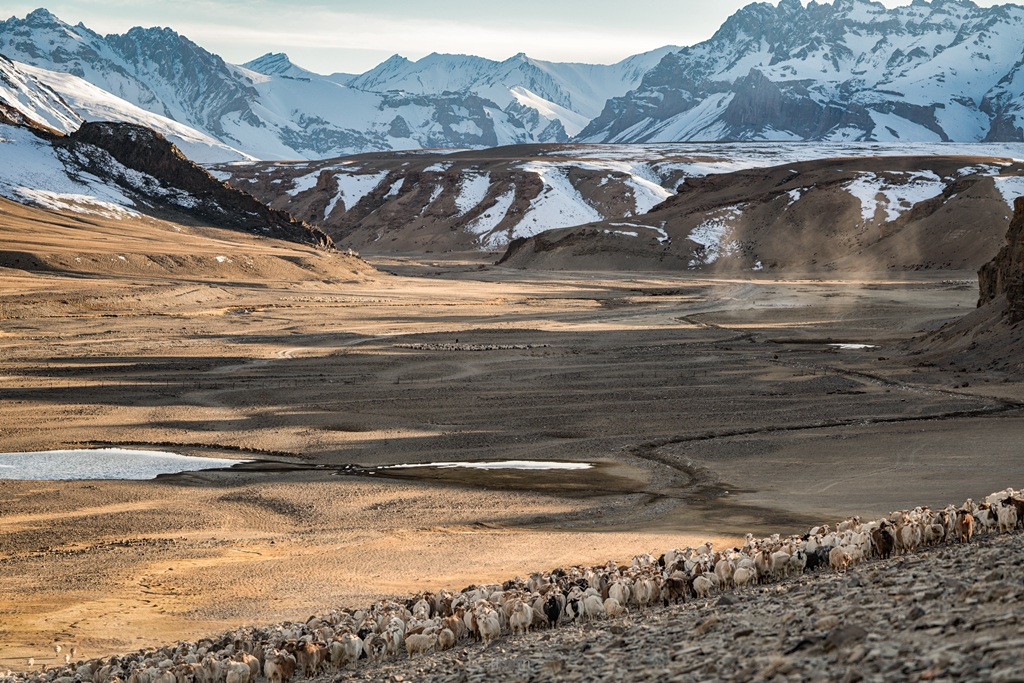
In the winter for 9 months the area can’t be accessed because of heavy snow and will cut them off from the rest of the world.
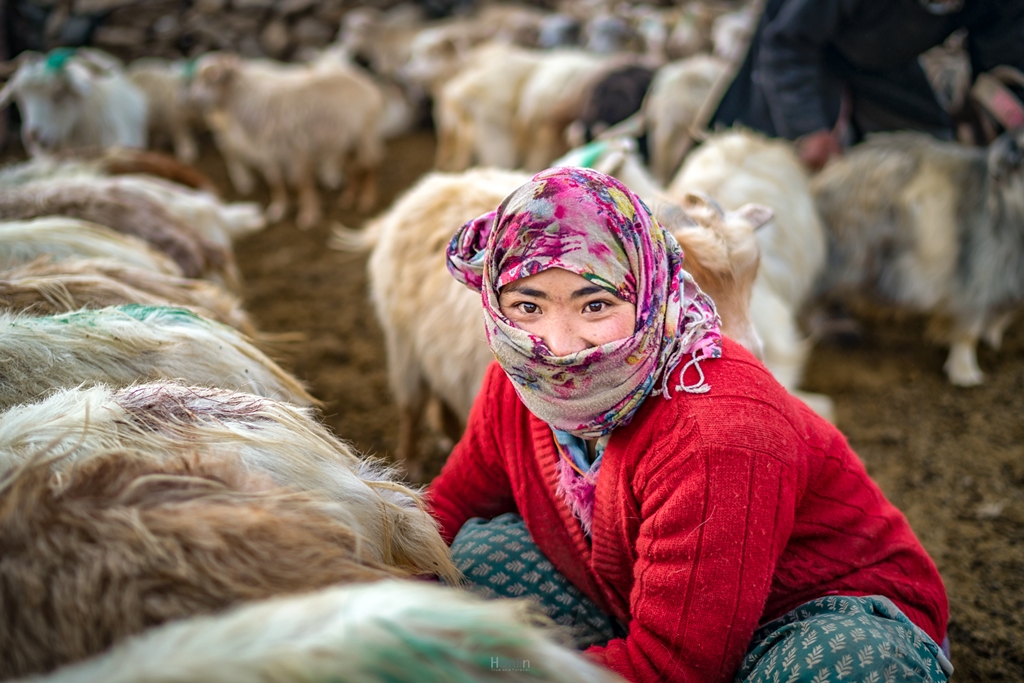
Changpa tribe relies on their animals for livelihood, nourishment, and survival, for centuries they raised Changthama, a special breed of sheep that produce the soft, luxurious, and finest Cashmere in the world.
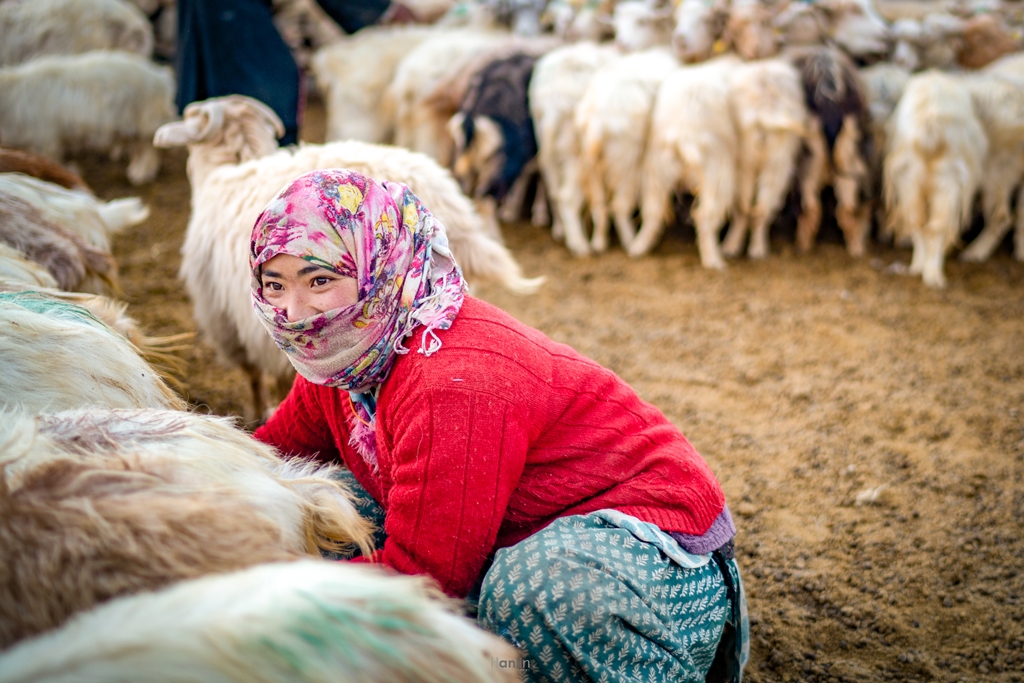
Changpa tribe a very challenging life with harsh environmental conditions has taught them how to survive and flourish in this condition.
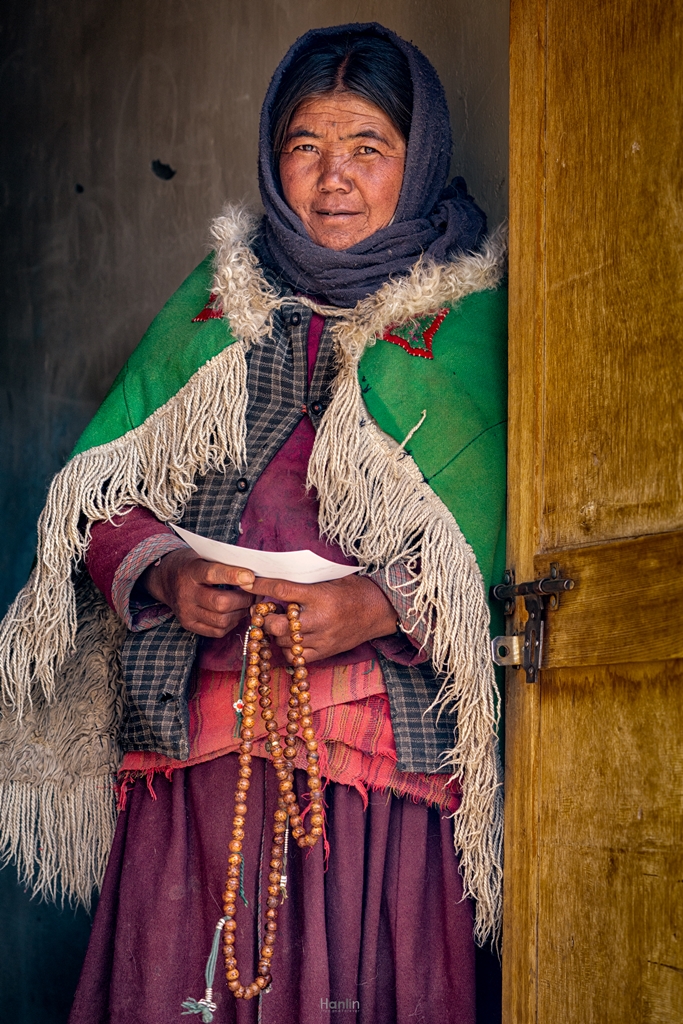
The Pashmina Plateau is a dry, barren land home to the nomadic Changpa people, herders of pashmina sheep.
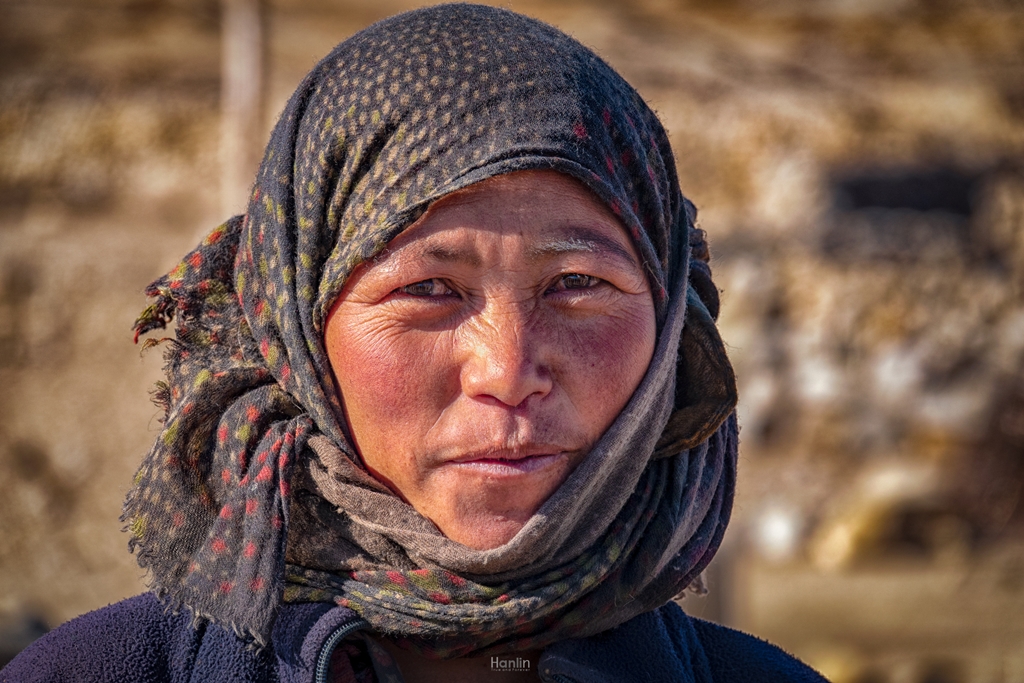
Changpa is a semi-nomadic Tibetan people resident of Changtang.
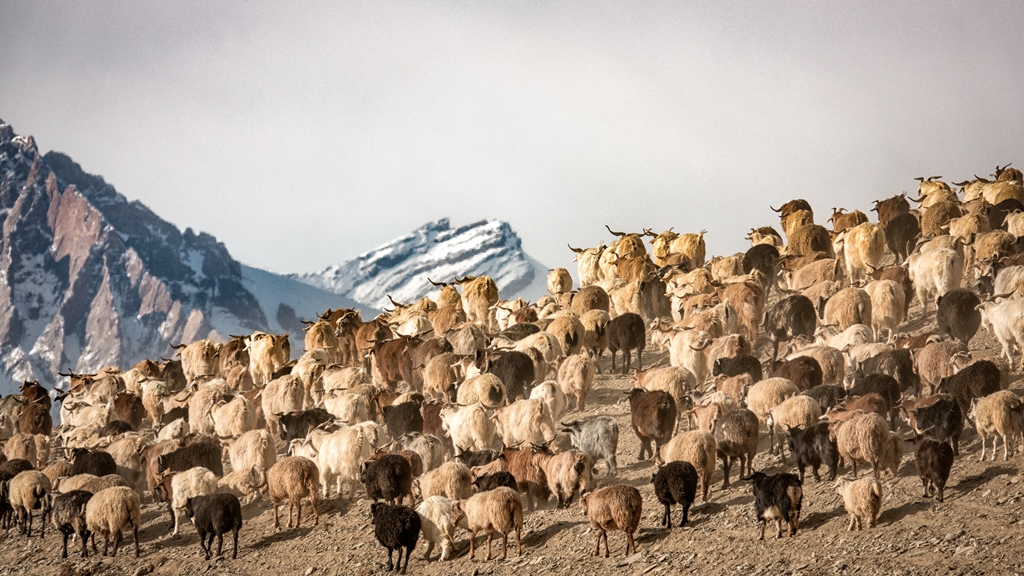
Milk and milk products like cheese are an important source of income or barter for Changpa families, the Changpas traded salt and wool, which they exchanged for barley.
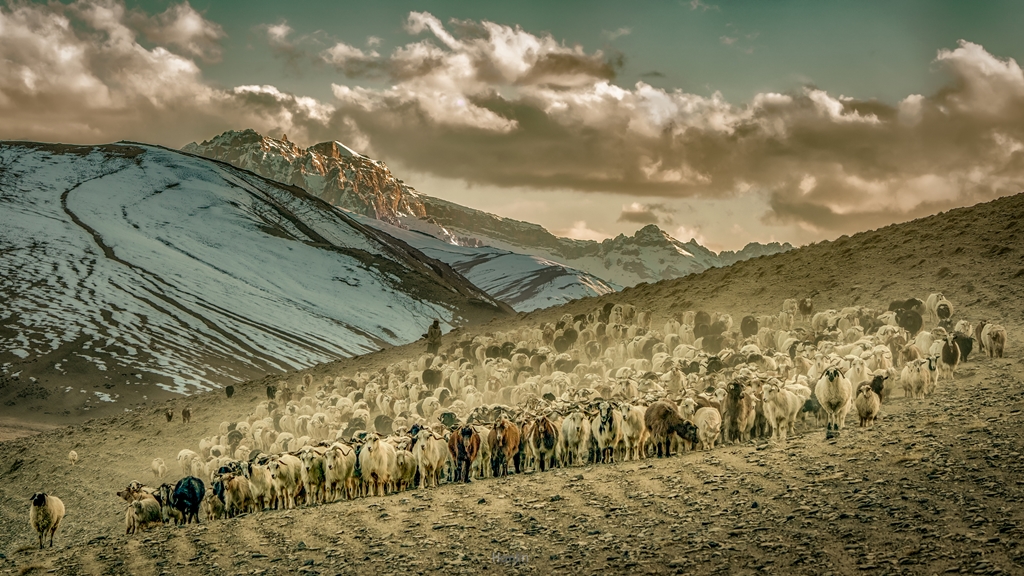
For centuries they raised Changthama, a special breed of sheep that produce the soft, luxurious, and finest, rarest Cashmere wool in the world.
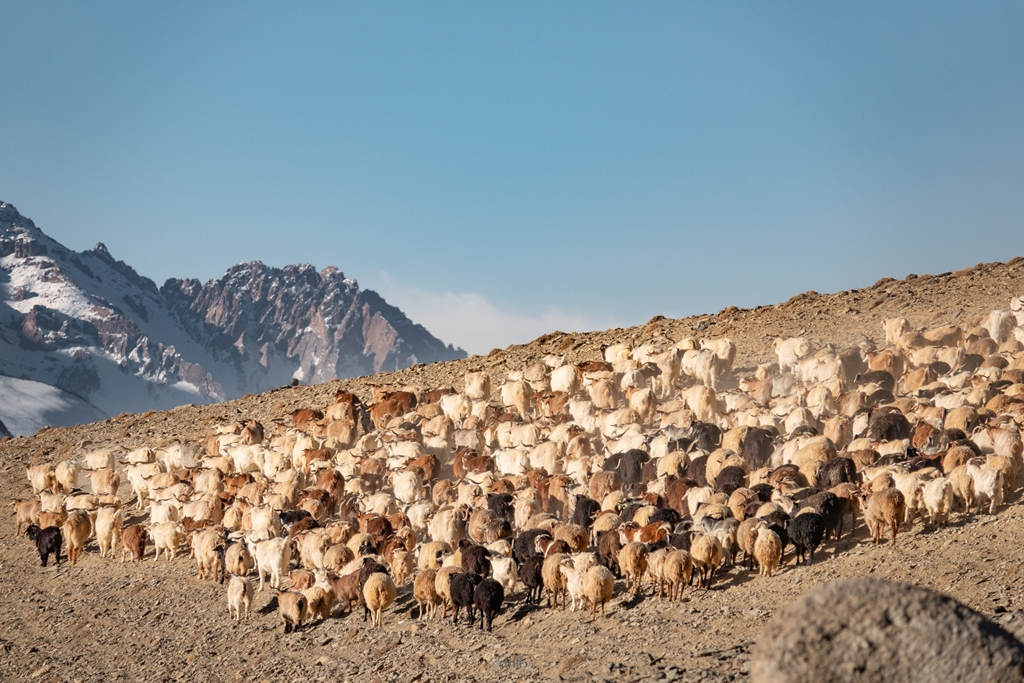
In the winter for 9month the area can’t be accessed because of heavy snow and will cut them off from the rest of the world.
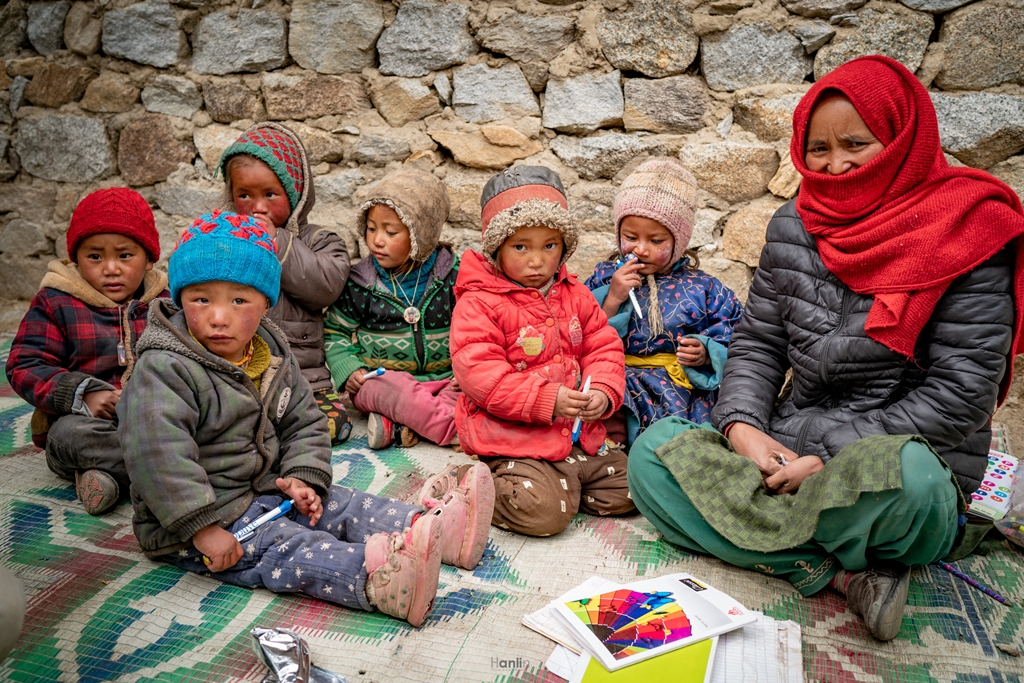
The area is very remote and there is no available school for Changpa kids. So every morning the children will gather in this small room and the adult will teach basic writing and reading to the kids.
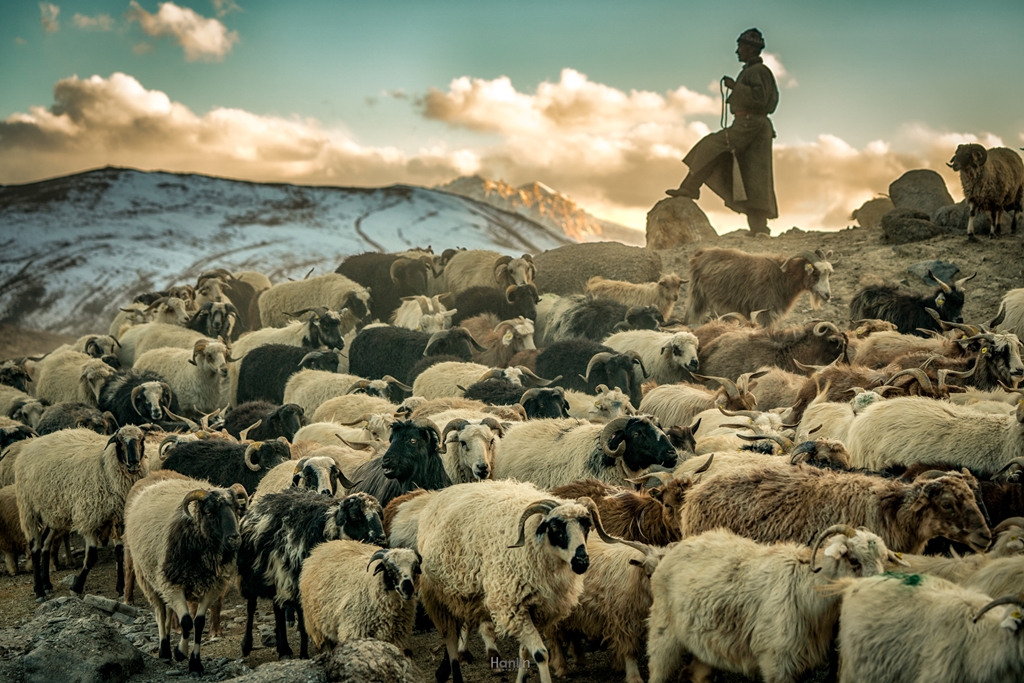
Chanting is used to accumulate wisdom and merit and to also purify negativity.
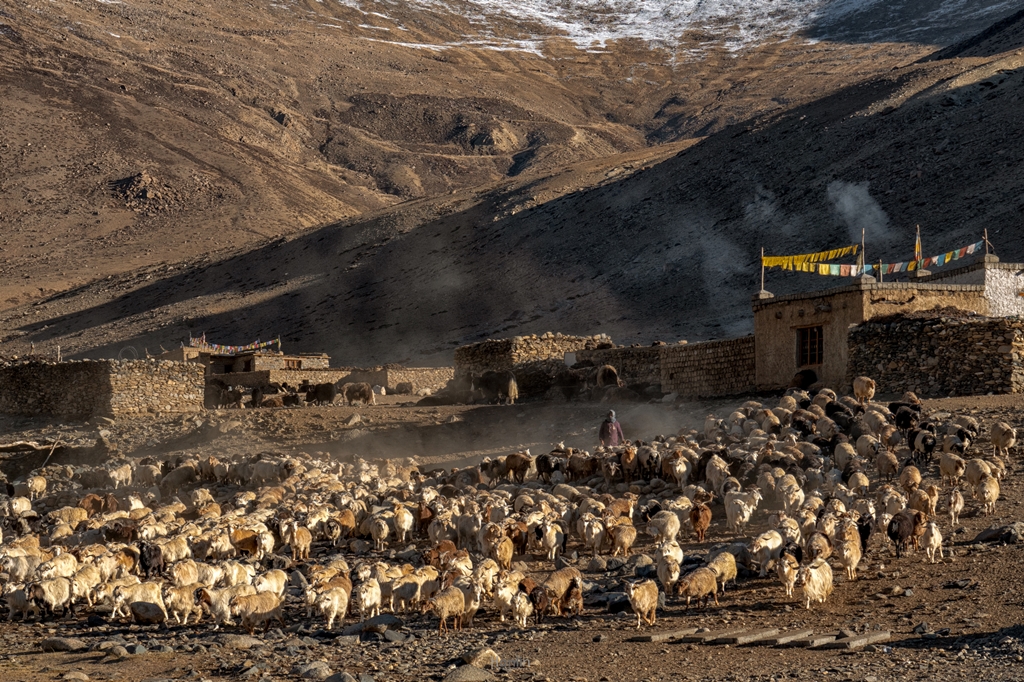
The men do most of the outdoor work and women mainly do the milking, cooking, spinning, weaving and raising children, as well as tending the baby animals.
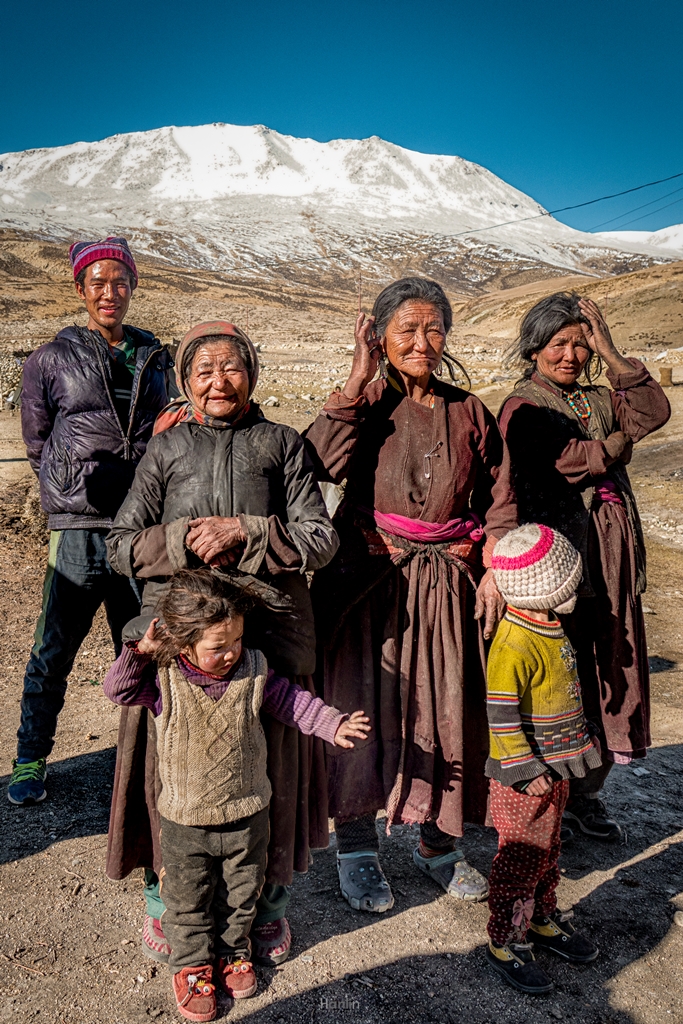
For the Changpa’s, life is simple, they are strong, brave, and beautiful people, due to harsh environmental conditions long winter and high altitude their skin tends to get rough patches around their cheeks and hands.
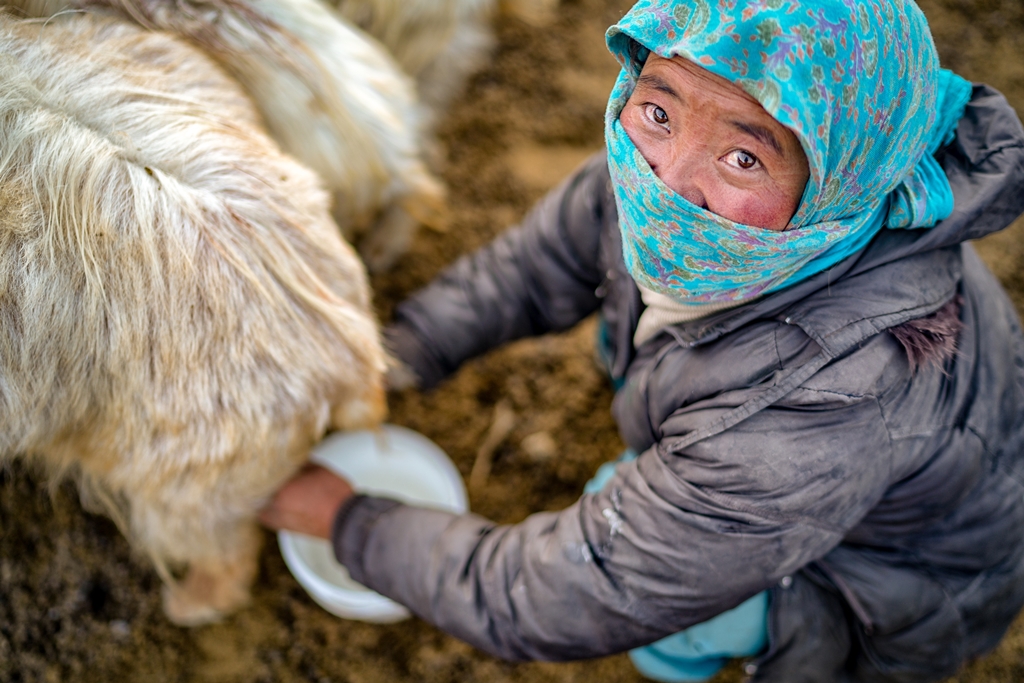
Changpa is a semi-nomadic Tibetan people resident of Changtang. People in Changtang call themselves ‘Changpa‘, which means ‘Northerner’
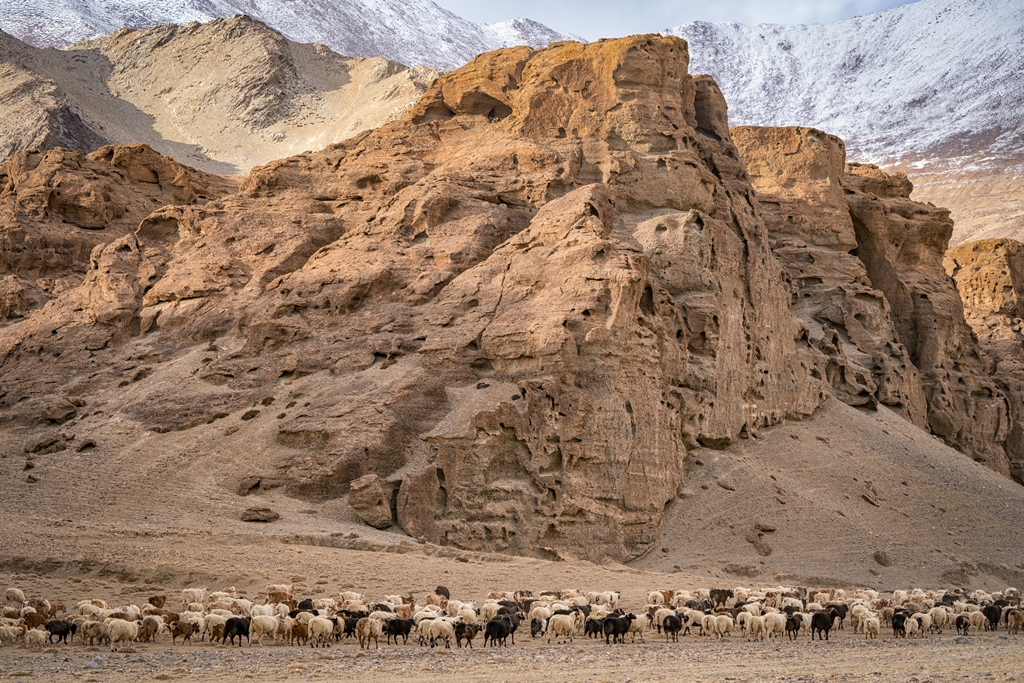
This photo was taken at dusk where the shepherd towards their settlement after a day of searching for grass to eat. Because Changthang is a cold desert and very limited for grass to grow, in a day they have to walk 40-50 km to find grass to eat
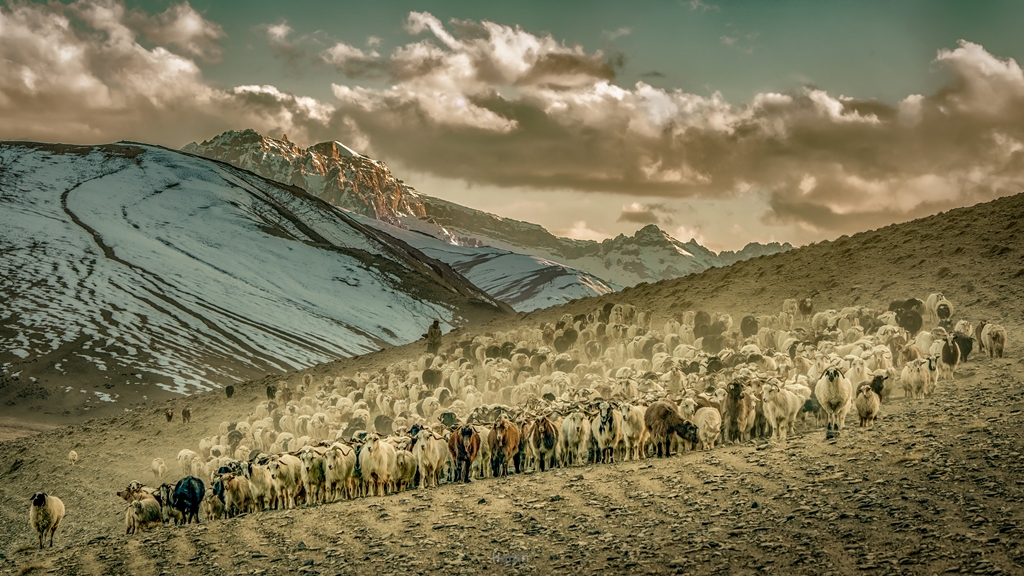
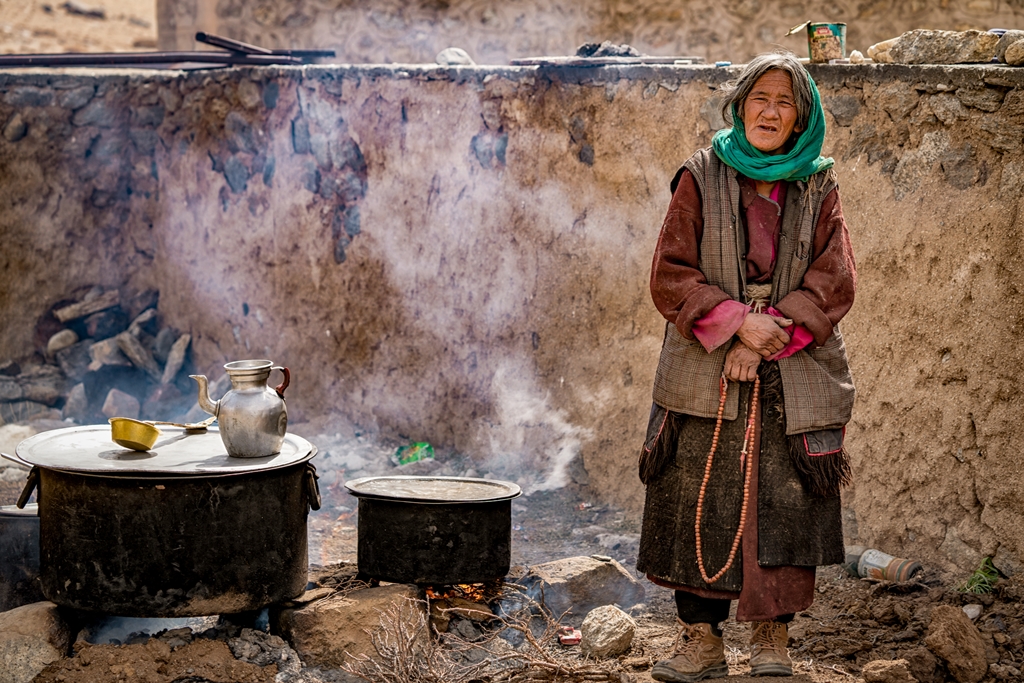
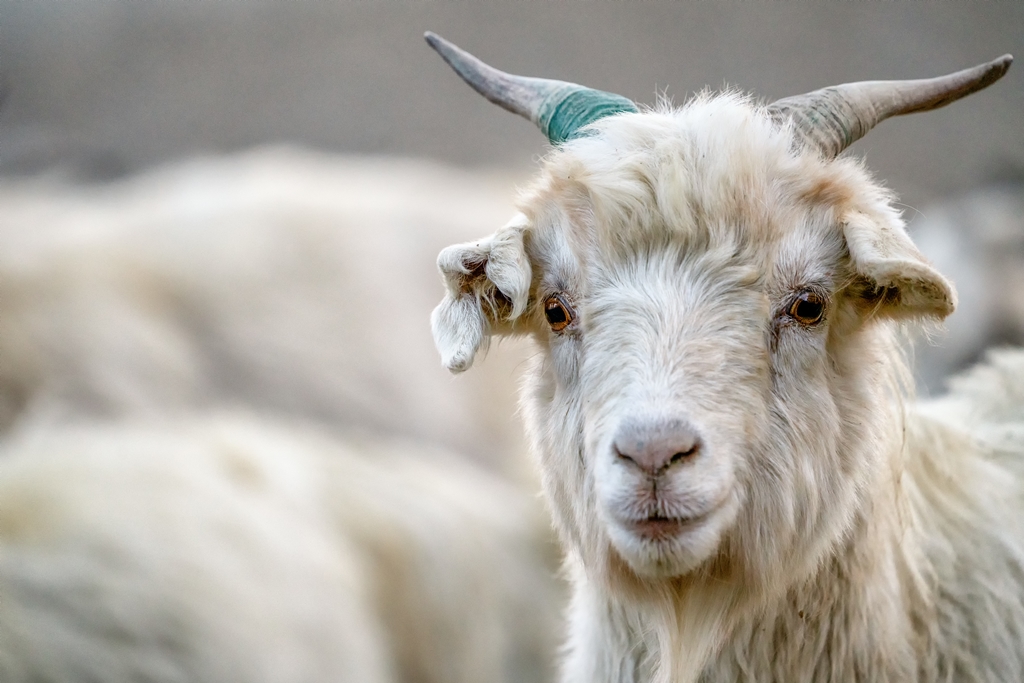
Changpa tribe relies on their animals for livelihood, nourishment, and survival, for centuries they raised Changthama, a special breed of sheep that produce the soft, luxurious and finest Cashmere in the world.
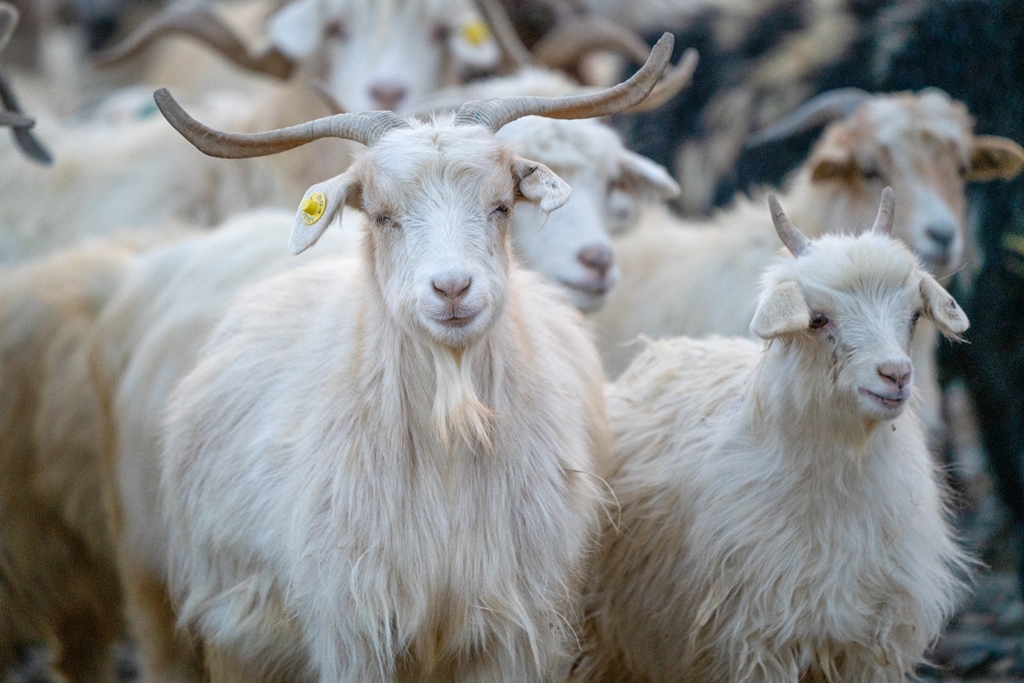
For Changpa tribe a very challenging life with harsh environmental conditions has taught them how to survive and flourish in this condition.
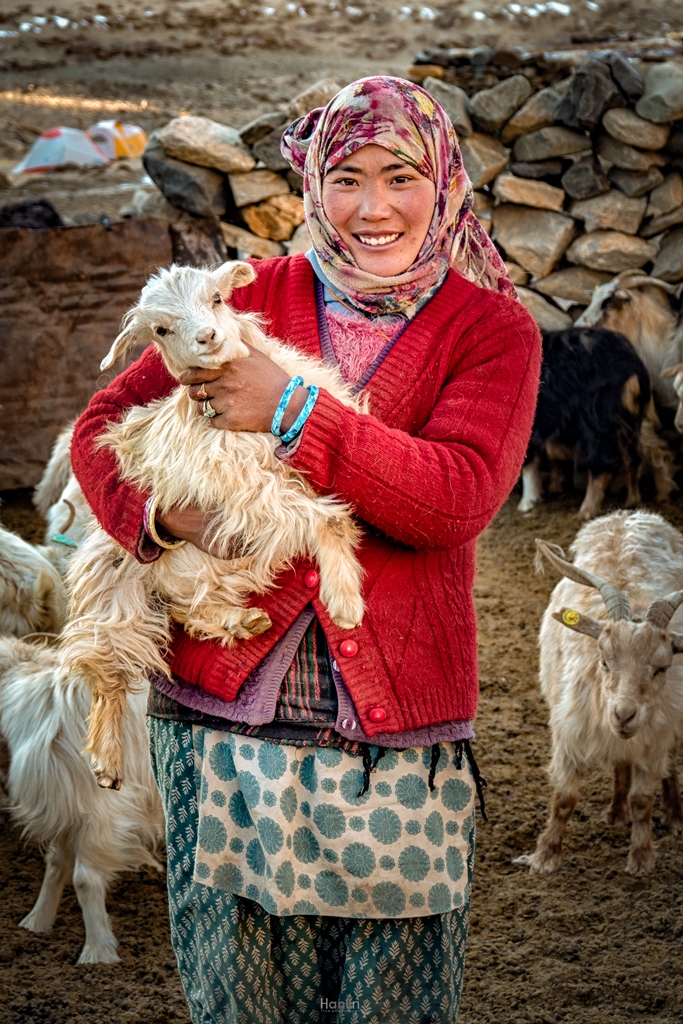
The herder carries his Changthama goat. This is a special breed of goat is relatively small in numbers.
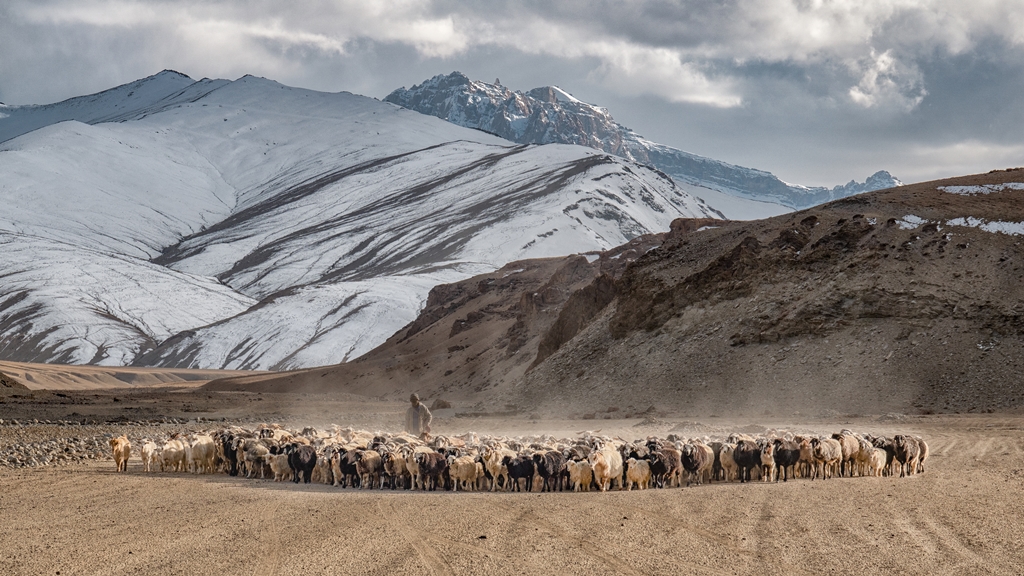
The Changthang plateau is one of the least populated areas in the entire world because of the harsh conditions in the region. The Pashmina Plateau is a dry, barren land home to the nomadic Changpa people, herders of pashmina sheep.
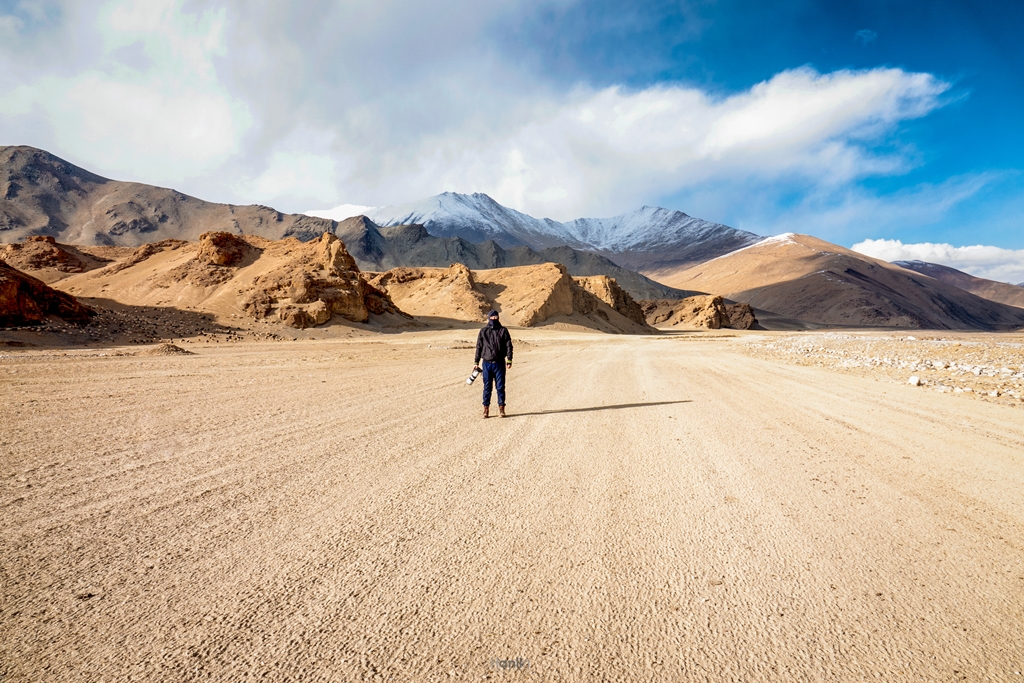
The Pashmina Plateau is a dry and barren land.
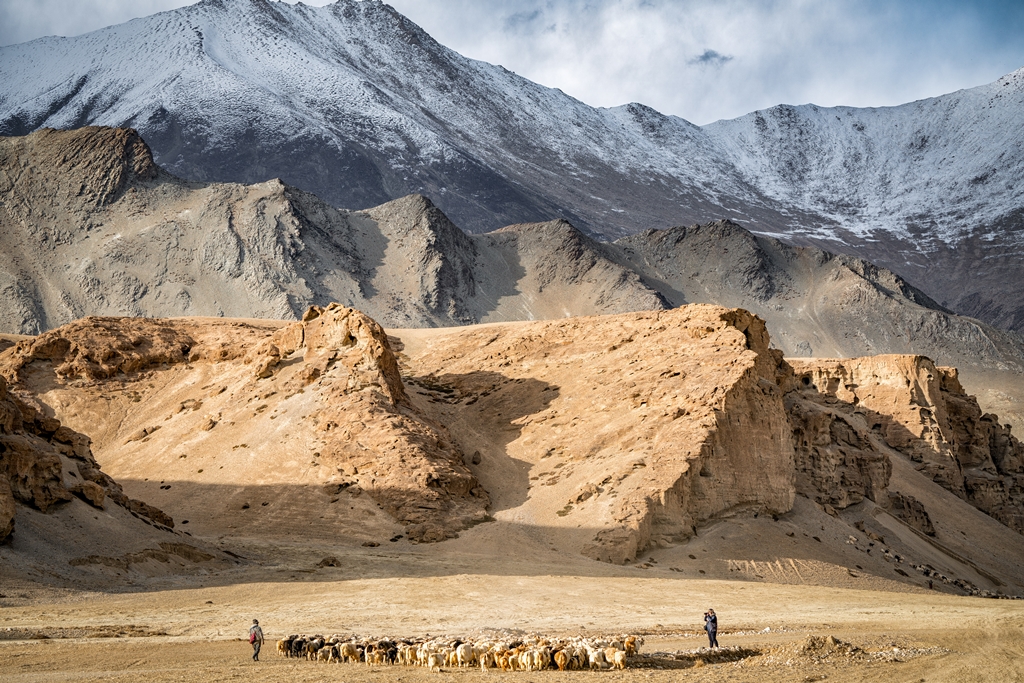
The Changthang Wildlife Sanctuary is a home for many rare flora and fauna of Ladakh, which is well cared for in this wildlife sanctuary.
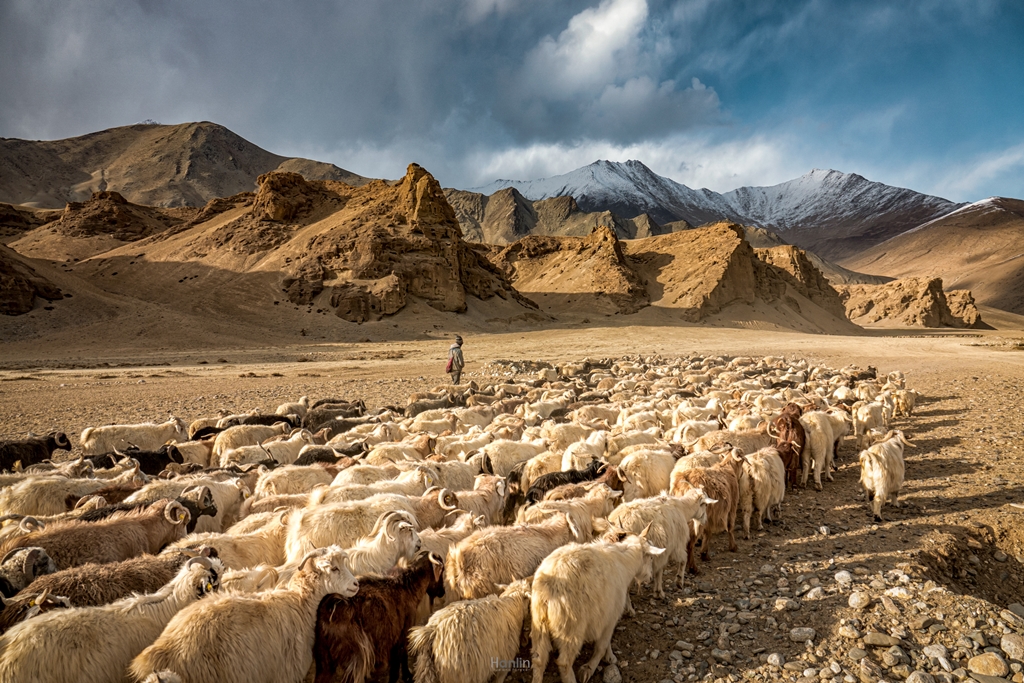
Dairy products are converted into less perishable forms during the summer when the livestock are producing high levels of milk, animals are slaughtered early in the winter, after fattening up in the summer and while the weather is conducive to storage.
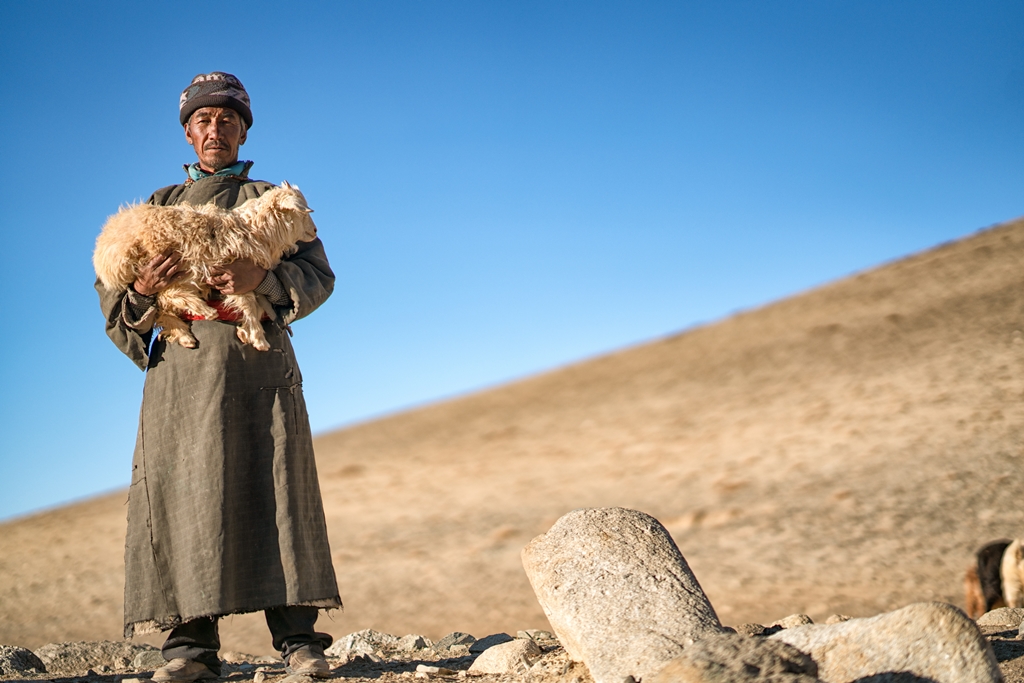
Nomadic people prohibit hunting wild animal because of religious faith in Buddhism. It is believed that hunting or poaching around the lakes would displease the Holy Spirit which will bring the wrath of nature in the forms of heavy snowfall posing a great threat to their livestock for grazing on open pastures. As result wildlife is well preserved in its natural state.
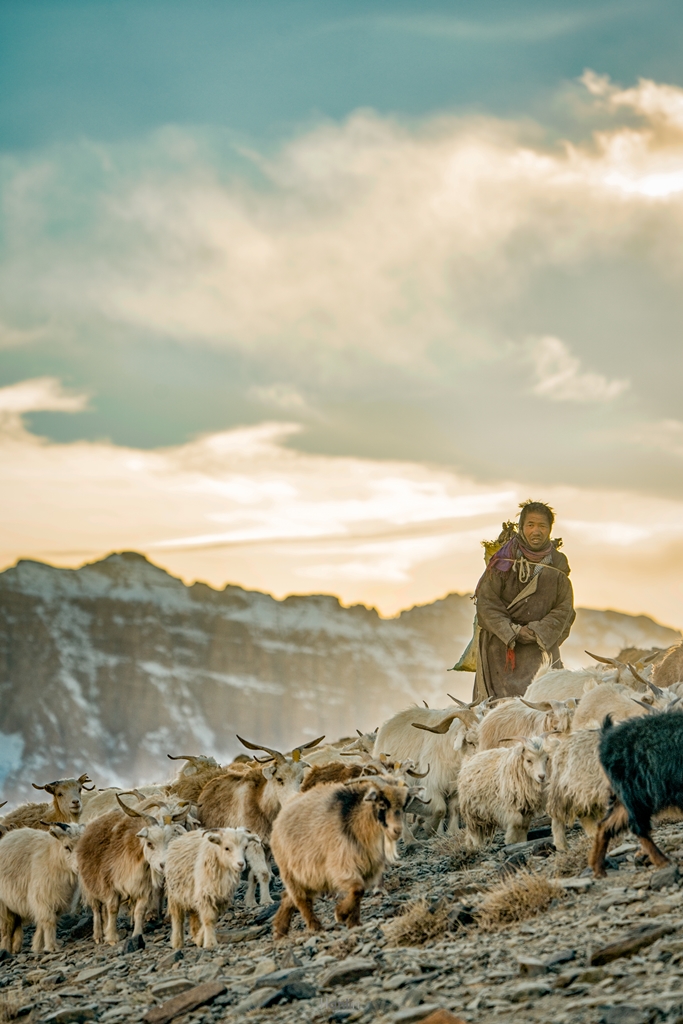
What they carry in their back is a dried branches to be used as fuel to warm their homes at night, they will collect the dry branches when herding the goat.
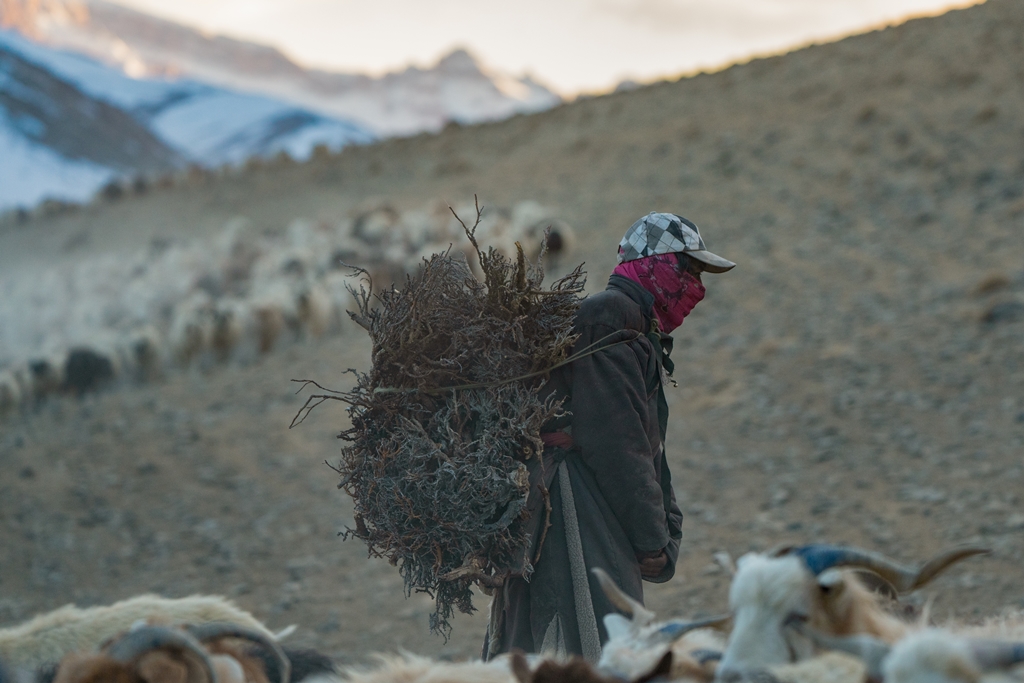
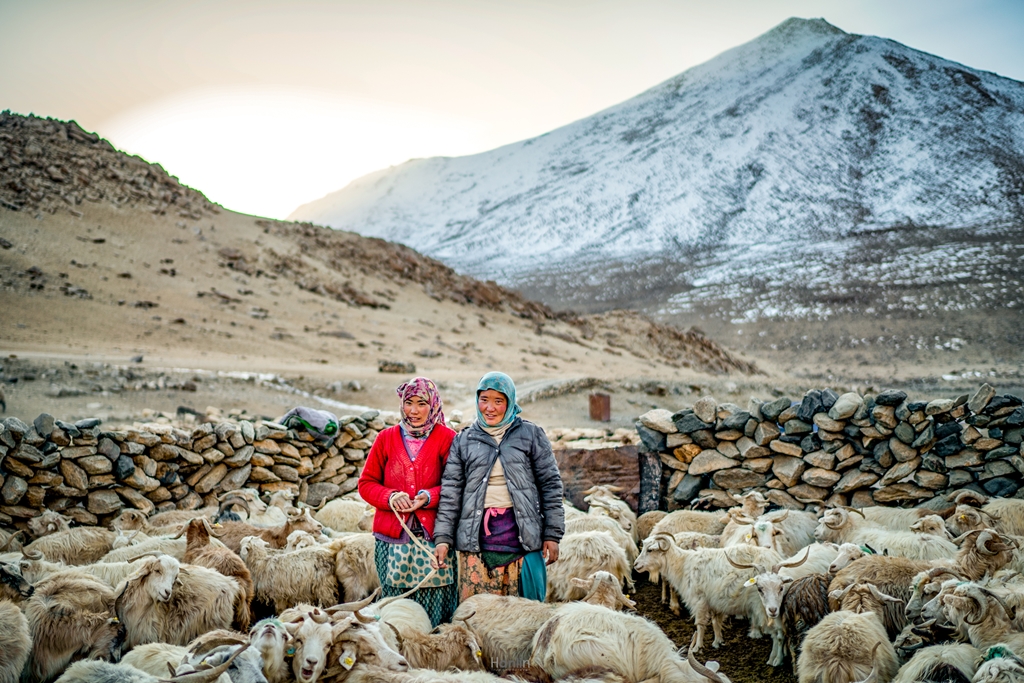
In winter, heavy snow will cut them off from rest of the world, they have to plan and prepare everything on a summer.
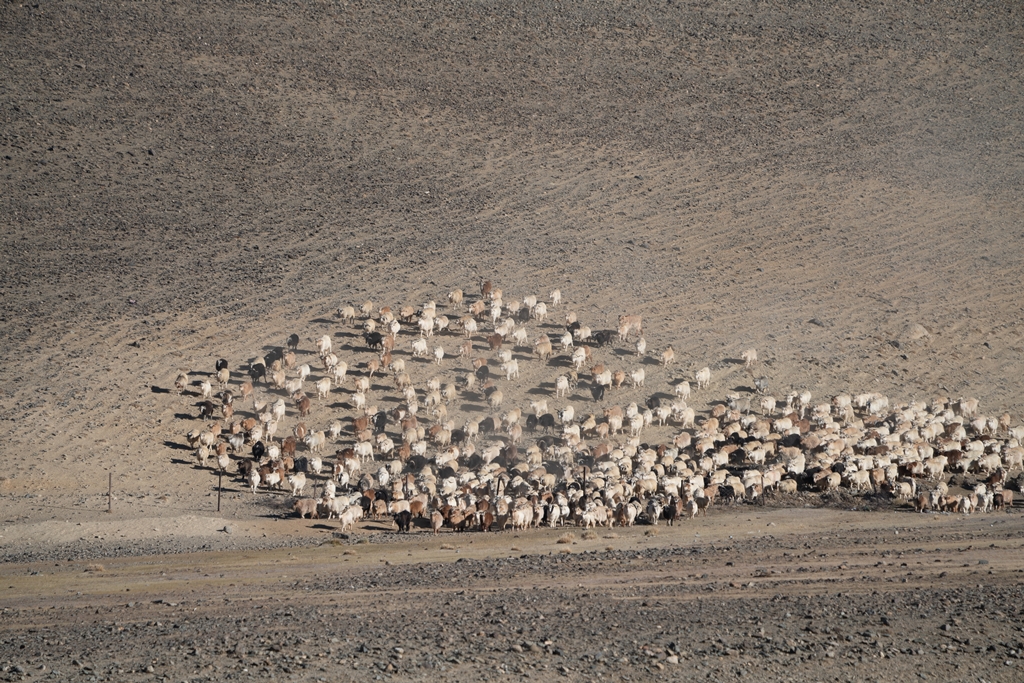
Before they are released for the day’s grazing, goats are milked in the pen. They are tied together tightly facing each other for milking. The Changpa people continue to stay in these mountains even in winter months, when the temperatures can drop to -40C or below.
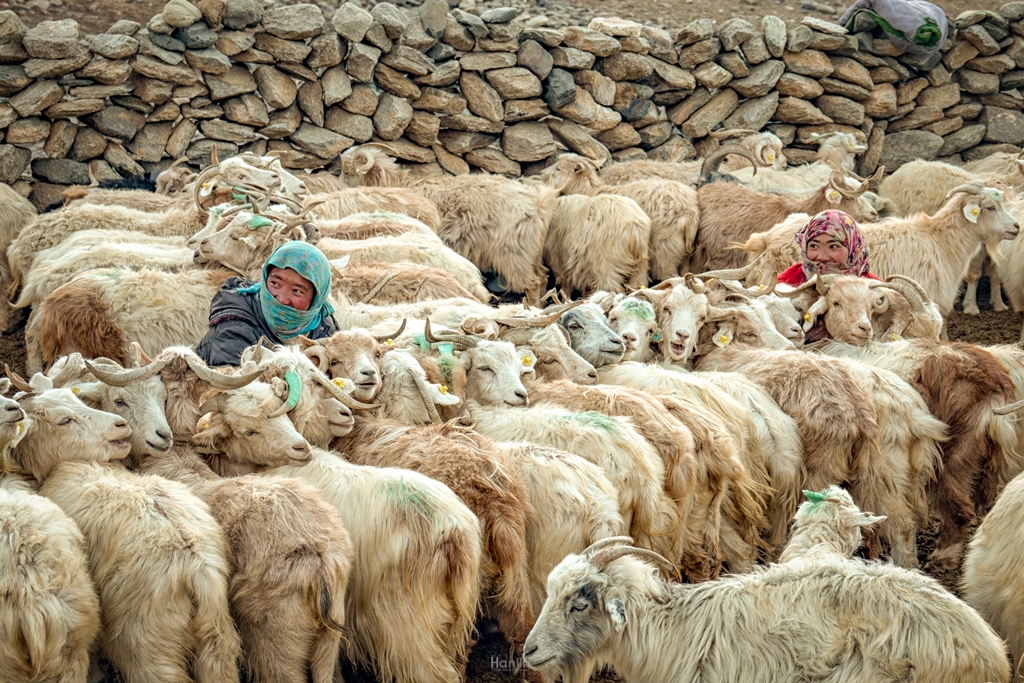
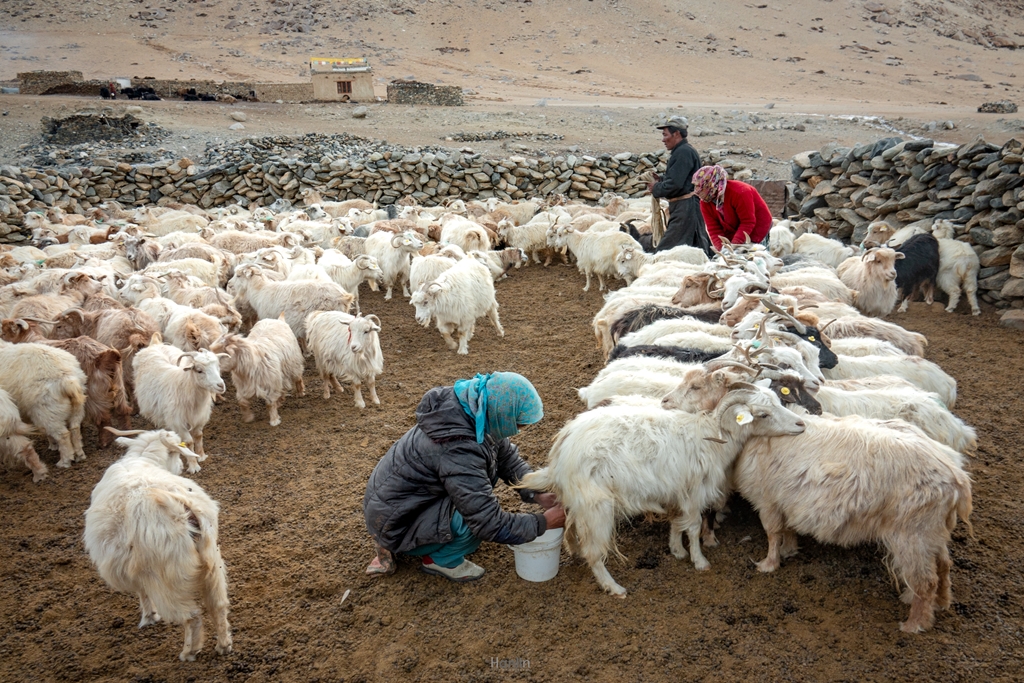
Rebo, is the traditional Changpa tent, are made of yak wool, the material protects the nomads from the extreme cold and icy winds. Its woven with space to allows plenty of sunlight and wind. Yet, surprisingly, the tents are warm and cozy. When it rains, it just flows off the tent’s surface and not a drop enters inside. Yak wool is real magic.
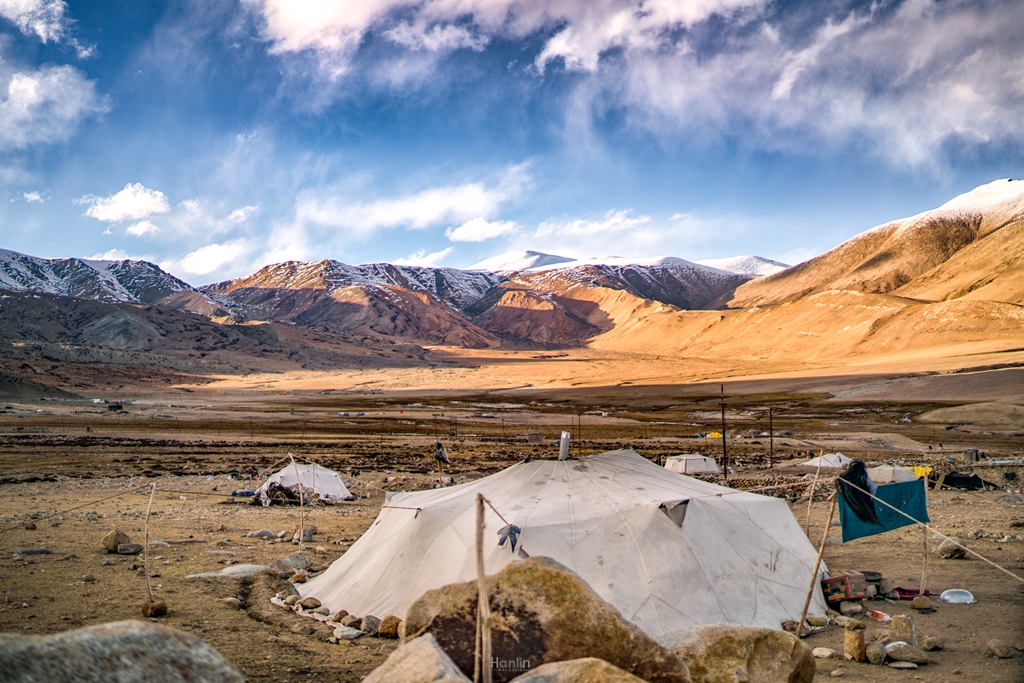
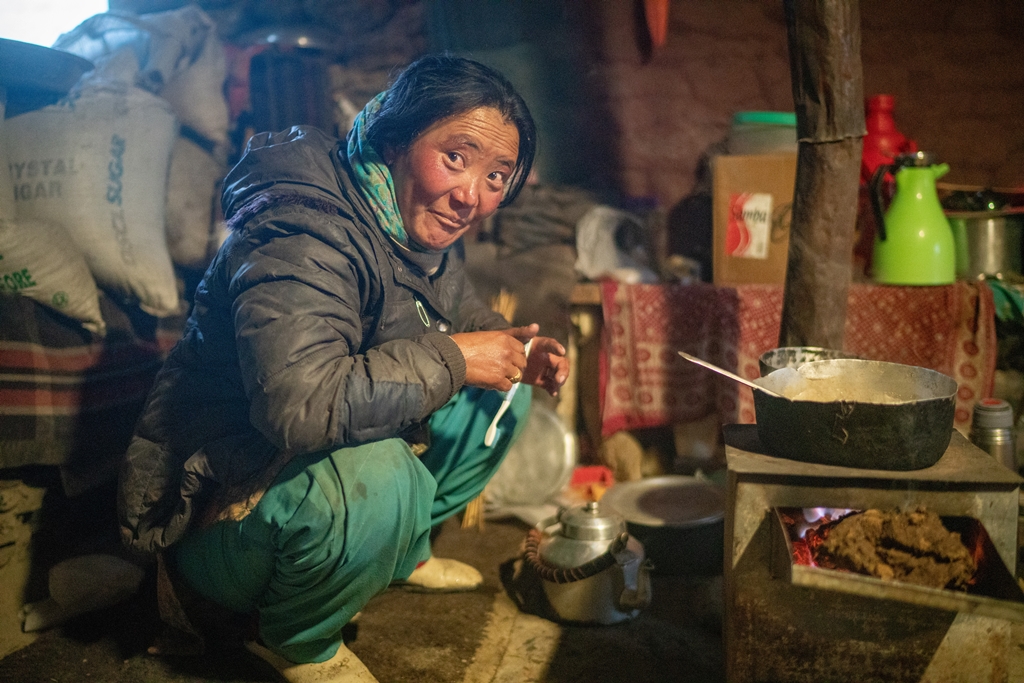
In Changpa tribe women mainly do the milking, cooking, spinning, weaving and raising children, as well as tending the baby animals.
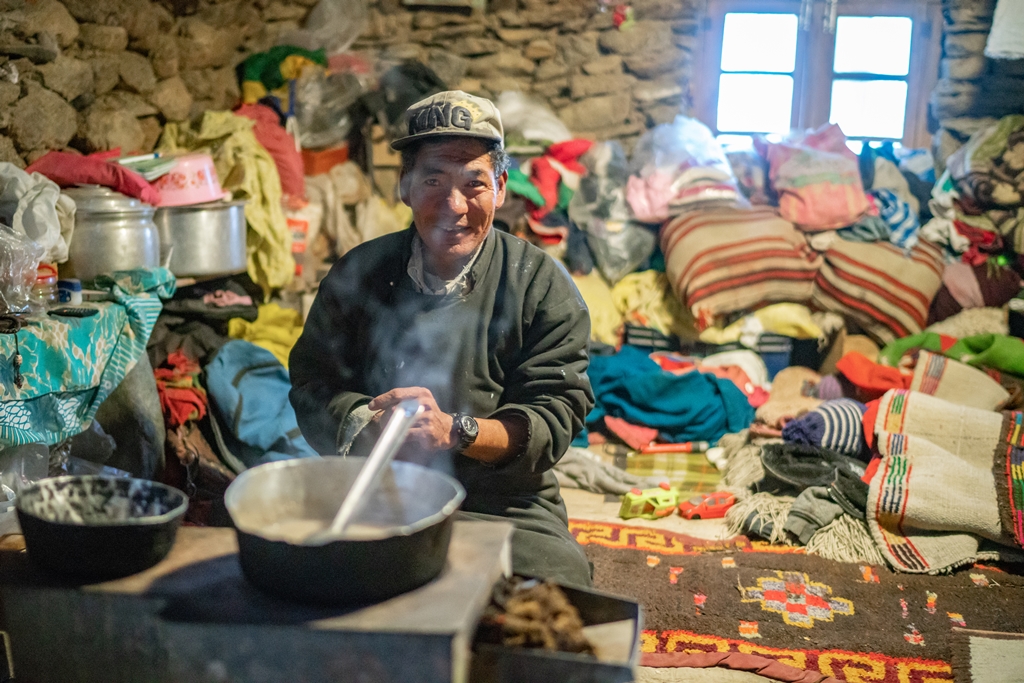
Inside the house of Changpa tribe.
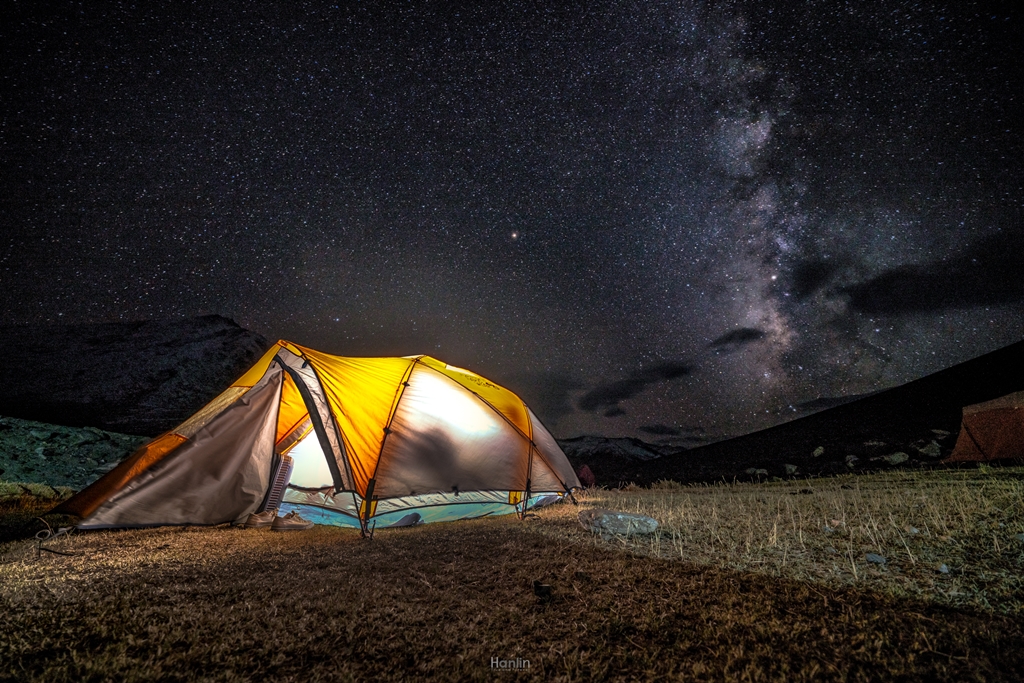
Our stay at one of the remote place in the world in a room with million star.
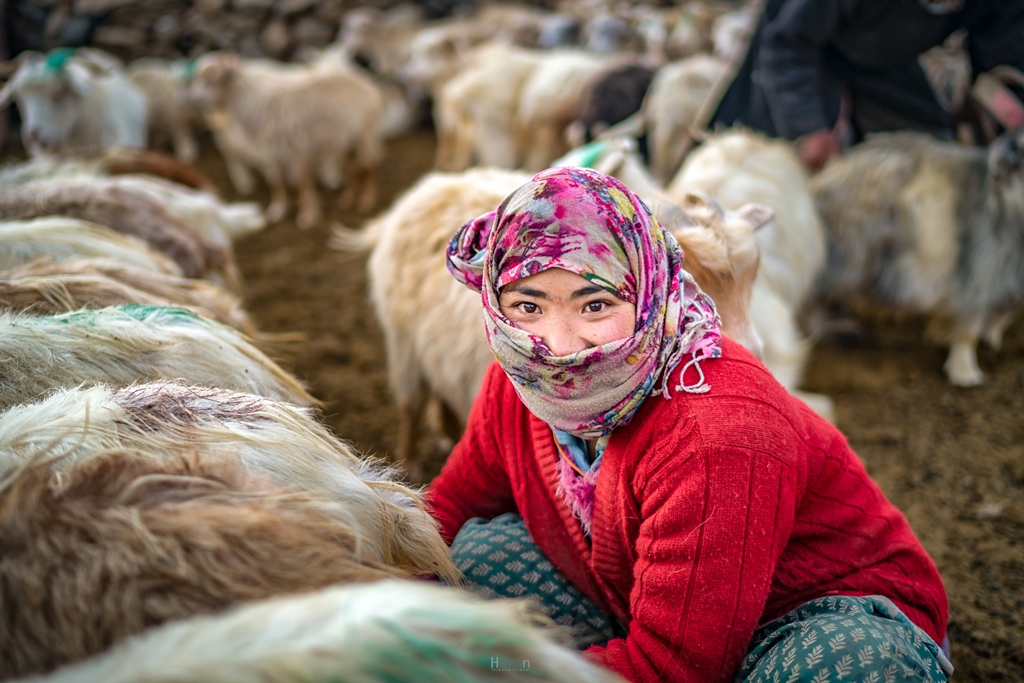
No Comments